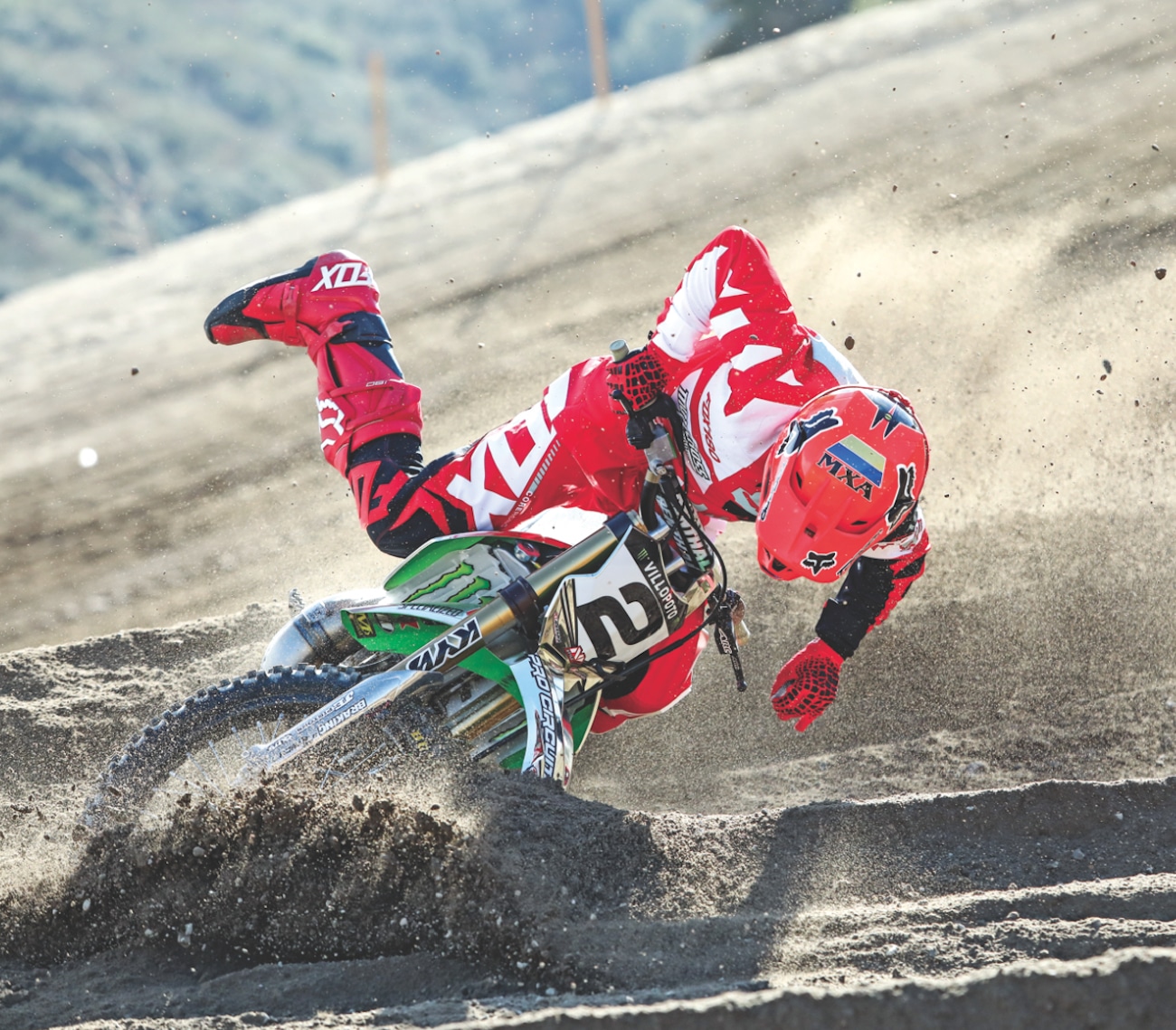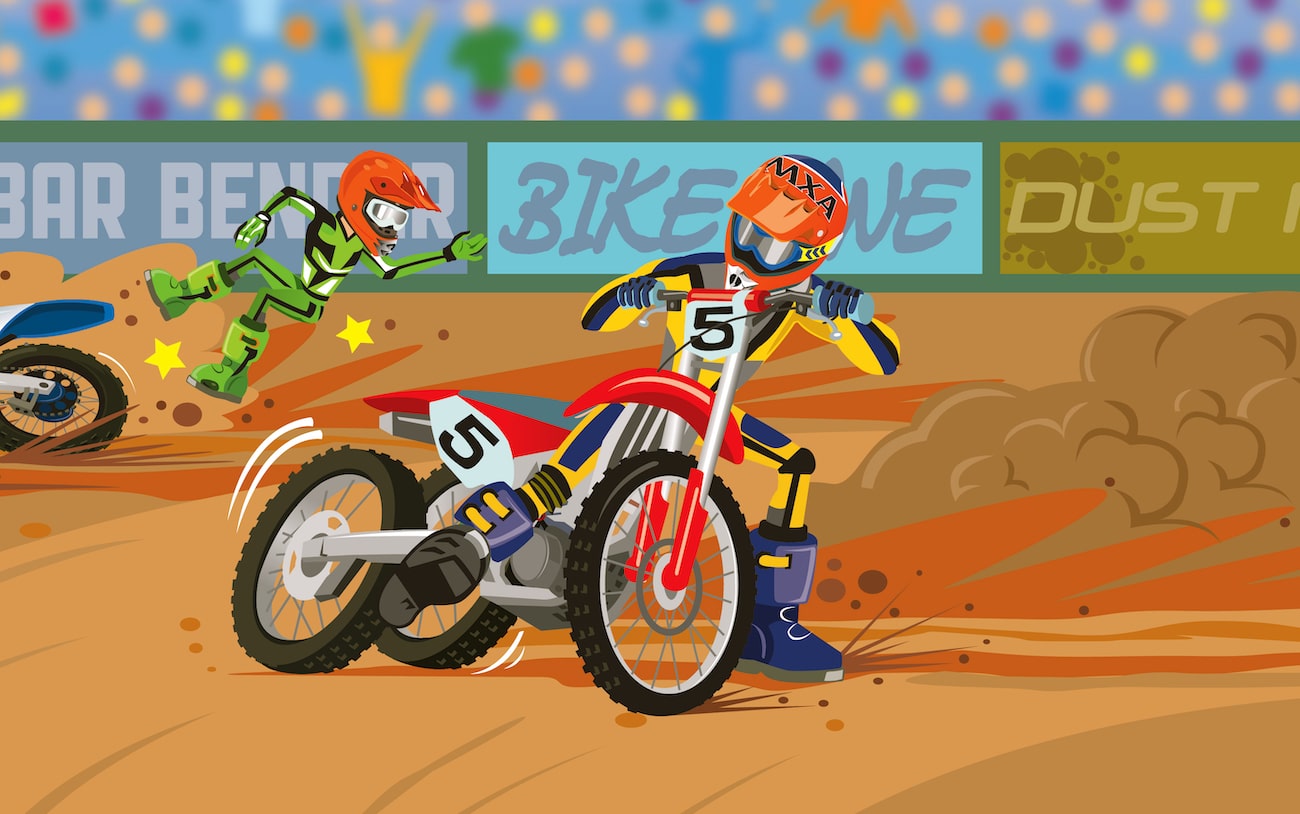MXA TECH SPEC: SCIENCE OF THE HIGH-SIDE AND HOW TO AVOID IT
As you rocket past the apex of the turn, you are brimming with confidence as you twist the throttle to the stops. Suddenly, the rear starts to drift. Instinctively, you flick the handlebars in the direction of the slide to arrest its development, but the bike’s rear end keeps coming around. In desperation, you chop the throttle—whammo! Congratulations, you just high-sided.
The MXA test crew will dissect the classic high-side so you can understand what forces convert a motorcycle into a medieval catapult. Perhaps by learning to recognize the signs that precede the calamity, you can avoid the most feared of all get-offs. Don’t want to hear a science lecture? Then stop reading now.
Any time you enter a corner, land sideways from a jump or swap ends in the whoops, you are trying to convert inertia (force stored by a mass moving along a straight line) into lateral acceleration (the G-forces that we feel in a turn). This change in direction creates a “force vector”—a line of equilibrium between the two paths.
TO ARRIVE AT THIS IMAGINARY “FORCE VECTOR” ANGLE, YOU DIVIDE HOW MANY DEGREES YOU DEVIATE FROM A STRAIGHT LINE IN HALF. THE RESULTING ANGLE HAPPENS TO BE EXACTLY HOW MUCH YOU NEED TO LEAN A MOTOCROSS BIKE TO COUNTER THE CORNERING FORCES
To arrive at this imaginary “force vector” angle, you divide how many degrees you deviate from a straight line in half. The resulting angle happens to be exactly how much you need to lean a motocross bike to counter the cornering forces. For instance, a 90-degree change in direction requires a 45-degree lean angle.
 This could be a low-side crash or a high-side crash, it just depends which way the force is working if you only get the bike turned halfway.
This could be a low-side crash or a high-side crash, it just depends which way the force is working if you only get the bike turned halfway.
Any lean angle that exceeds the force vector reduces the available traction and causes the bike to want to low-side (slide out). Any lean angle less than the force vector moves the motorcycle’s center of gravity to the outside of the corner and into the dreaded high-side zone.
What typically causes a high-side? (1) Tightening the radius of the corner at the last second. (2) Shifting your weight too far to the outside of the optimum lean angle. (3) Entering the turn with too much speed to be countered by lean angle.
SIR ISAAC NEWTON SAID THAT BODIES IN MOTION MUST REMAIN IN MOTION UNLESS ACTED UPON BY AN OUTSIDE FORCE. CONVERSELY, NO LEAN MEANS NO TURN.
Sir Isaac Newton said that bodies in motion must remain in motion unless acted upon by an outside force. Conversely, no lean means no turn. If you have failed to develop enough cornering force, the mass of you and your motorcycle are doomed to continue along your original path (remember that straight line?). It’s the law. You may want to turn, but unless you effectively counter Newton’s law, you are going to go straight. Even worse, if you get the bike turned halfway but without enough conviction, it will high-side.
How does a high-side happen? When you are in a powerslide, your wheels are going around the corner on two different paths. The wheels are pointed sharply towards the apex of the turn, but the bike is actually moving sideways, angling across the dirt in a wider arc. In this situation, three things can happen:
(1) If the rear wheel suddenly hooks up and stops spinning, the bike will immediately try to turn into the corner to vector where the rear wheel is pointed.
(2) Turning in sharply (decreasing the radius of the turn) requires a much lower lean angle, but because humans rarely respond quickly enough, the bike continues to travel sideways on its original path.
(3) Because motorcycle tires cannot roll sideways, the bike tumbles into high-side mode.
THE BEST WAY TO AVOID A HIGH-SIDE IS TO NEVER ALLOW YOURSELF TO GET INTO THE SITUATION IN THE FIRST PLACE. YOU MUST COMMIT TO EVERY CORNER.
The best way to avoid a high-side is to never allow yourself to get into the situation in the first place. Learn to read the signs. You must commit to every corner. It’s easy to correct things if you have leaned too far, but virtually impossible to correct things if you haven’t leaned far enough. Don’t be afraid to twist the throttle when you are in a jam. And, most important, when you sense a high-side is imminent, always keep the front wheel pointed in the direction you are traveling, regardless of where the track goes.






Comments are closed.